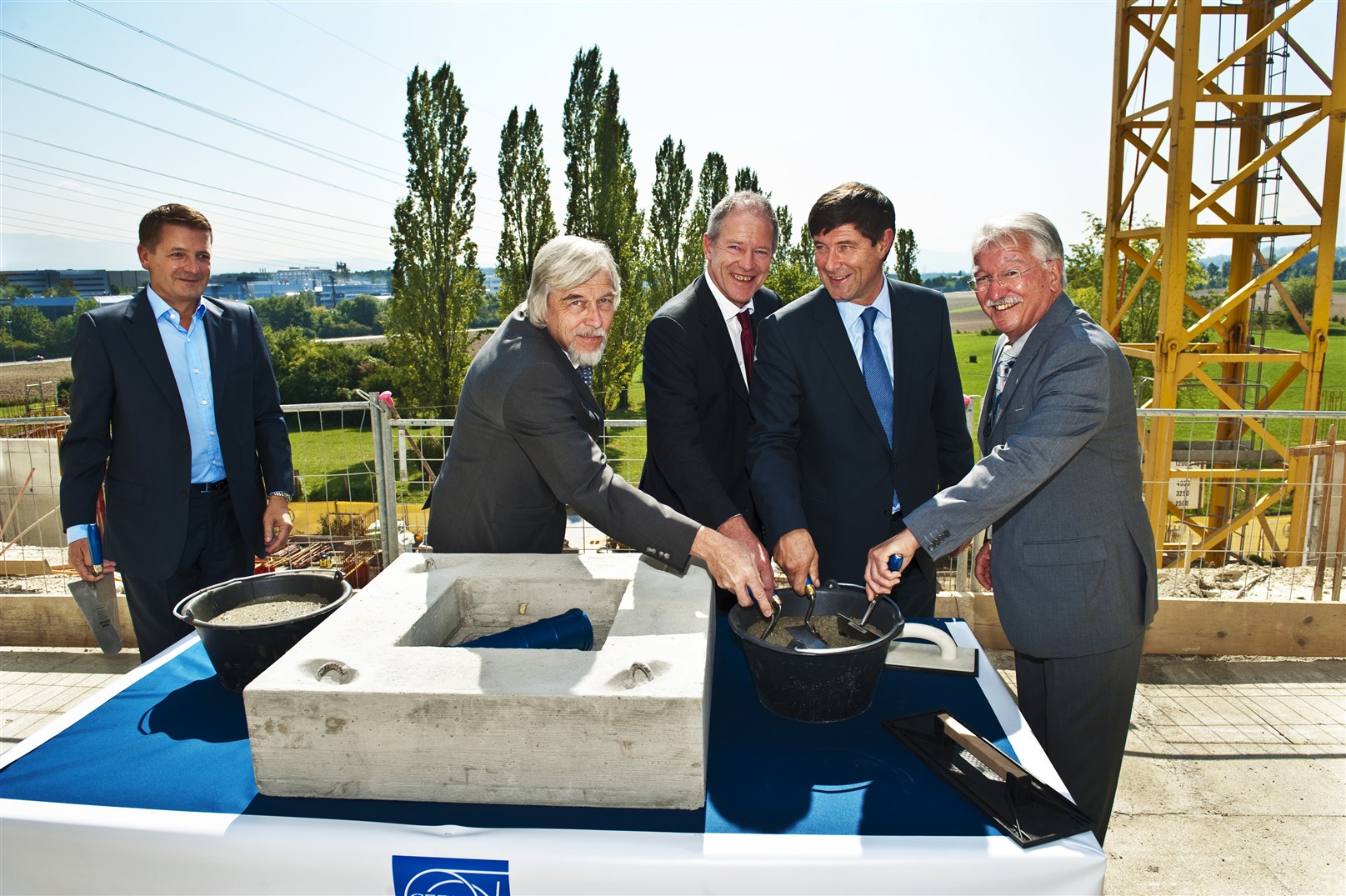Making more space for more people


The upcoming operation of the LHC is attracting and will continue to attract more and more researchers. To ensure that we are able to cope with this influx, our technical services have been busy increasing the office space available on the CERN site. On 9 September, an important milestone in this process was passed when we laid the foundation stone of Building 42, which will provide 300 additional workstations for scientists analysing the LHC data, in addition to the 800 already available in the adjoining Building 40. With this building, CERN has "gone green". And not just because the scientists will be able to admire the beautiful Satigny countryside through their windows - this building will be more environmentally friendly than any other we have built, equipped with features such as a green roof, enhanced insulation and automatic sun blinds.
We need to increase our office space not only to cope with greater numbers of visiting scientists but also to open our doors to new countries wishing to strengthen their links with the Organization. This also means that we will have to adapt the infrastructure used by the representatives of these States. We have therefore started thinking about possible solutions, such as the construction of a new Council Chamber and a new auditorium.
More generally, we have launched a major building renovation campaign. Anyone who takes a walk around CERN’s sites can see that renovation is no luxury, but an absolute necessity. Most of our buildings date back to the 1950s and 60s and have had only minimal maintenance since all our resources go into science. Nevertheless, we need to ensure decent working conditions for everyone on the site. And for old as well as new buildings, all our decisions must be guided by the need to respect the environment.
All this consolidation comes at a high cost. This is something we have to accept, but thankfully we can always rely on the support of the Host States - the Swiss Confederation has supported our loan application to finance Building 42 via the
Rolf Heuer

